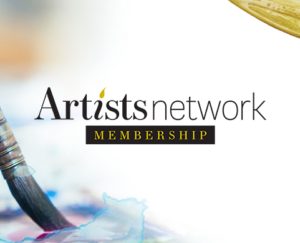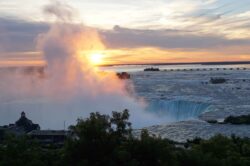The Lessons of Subject Matter

The subject matter we are drawn to paint and how we ultimately portray it is as diverse as the human experience itself. We are each drawn to specific subject matter and even when two of us work from the same subject, we bring our own perspective to the portrayal. This is what makes painting so exciting.
The three broad categories of subject matter are: still life, portrait and landscape. Within these categories, of course, there are many subsets. Each has an aesthetic and sensitivity unique to its character. All of us have formed personal relationships with different subjects through our individual interactions with them, and we are capable of telling a story through this shared human experience. These perspectives form our attitudes and emotions when painting. By arranging and orchestrating the visual elements of the composition and utilizing a myriad of painting techniques, we make it individual.
In becoming a well-trained painter, each of these subject areas—still life, portrait, and landscape—provides a lesson and should not be overlooked due to a lack of motivation. You may not be attracted to the still life, uninterested in the portrait, or feel dispassionate about the landscape, but by practicing them you will polish technical skills that make you a more confident painter. A painting is a configuration of accurate shapes, a representation of lights influences, and a sensitive arrangement of colors. These exist in every representational painting, and for that matter every abstract painting. Individual subject matter is all composed of them. In that regard, everything we paint is all the same. Each subject does provide a heightened lesson, though. The still life teaches the importance of value. Within the confines of a relatively small distance, the influence of light and the manipulation of edge create form. The portrait teaches accurate drawing. The human likeness allows for no error. The landscape teaches color harmony. Natural light and its influence across nature’s palette help us to understand the relationship all colors have to one another. A wise instructor passed this thought on to me many years ago: “To learn value relationships, it’s the still life; to draw, it’s the portrait; and to become sensitive to color, it’s the landscape. Each has something to offer. Practice them often and then paint your passions!”
MORE RESOURCES FOR ARTISTS
 Artists Network Membership - 1 Year
Artists Network Membership - 1 Year  Breakthrough Paint Along: Where Mixed Media Combine Together
Breakthrough Paint Along: Where Mixed Media Combine Together  Paint Along 127: Paint the Motion of the Sea
Paint Along 127: Paint the Motion of the Sea  Breakthrough Paint Along: The Big Value of Miniature Landscapes
Breakthrough Paint Along: The Big Value of Miniature Landscapes  Portrait Painting: Rembrandt's Techniques Video Download
Portrait Painting: Rembrandt's Techniques Video Download  Figure Drawing Tips with Brent Eviston Video Download
Figure Drawing Tips with Brent Eviston Video Download  Southwest Art August/September 2025 Digital Edition
Southwest Art August/September 2025 Digital Edition  Artists Magazine July/August 2025 Digital Edition
Artists Magazine July/August 2025 Digital Edition  Pastel Journal Summer 2025 Digital Edition
Pastel Journal Summer 2025 Digital Edition  Artists Magazine March/April 2025 Digital Edition
Artists Magazine March/April 2025 Digital Edition  Artists Magazine January/February 2025 Digital Edition
Artists Magazine January/February 2025 Digital Edition  Best of Watercolor: Winners of the Splash 26 Competition Print Edition
Best of Watercolor: Winners of the Splash 26 Competition Print Edition  Southwest Art June/July 2025 Print Edition
Southwest Art June/July 2025 Print Edition  Artists Magazine May/June 2025 Print Edition
Artists Magazine May/June 2025 Print Edition  Southwest Art 2021 Digital Collection × 1
Southwest Art 2021 Digital Collection × 1  Watercolor Artist 2020 Digital Collection × 1
Watercolor Artist 2020 Digital Collection × 1  Watercolor Artist 2019 Annual Digital Collection × 1
Watercolor Artist 2019 Annual Digital Collection × 1  Watercolor Mega Magazine Collection × 1
Watercolor Mega Magazine Collection × 1  Pastel for Beginners Workshop
Pastel for Beginners Workshop  Composition & Design for Landscape Painting Video Workbook
Composition & Design for Landscape Painting Video Workbook  Drawing Mastery: Shading Course
Drawing Mastery: Shading Course  Alla Prima Bootcamp: 4 Weeks to Confident Painting Course
Alla Prima Bootcamp: 4 Weeks to Confident Painting Course  Eight Greats: The Pastel Journal's 10th Anniversary Artist Interview Series Digital Download
Eight Greats: The Pastel Journal's 10th Anniversary Artist Interview Series Digital Download  Secrets of Hyperrealist Watercolor Course
Secrets of Hyperrealist Watercolor Course  Acrylic Artist Summer 2017 Digital Edition
Acrylic Artist Summer 2017 Digital Edition  Exploring Acrylic: Abstract Art in Action Video Download
Exploring Acrylic: Abstract Art in Action Video Download  WetCanvas Live! Paint Stunning Landscapes from Photos: Lesson 23 & 24 Video Download
WetCanvas Live! Paint Stunning Landscapes from Photos: Lesson 23 & 24 Video Download  WetCanvas Live! Paint Stunning Landscapes from Photos: Lesson 9 & 10 Video Download
WetCanvas Live! Paint Stunning Landscapes from Photos: Lesson 9 & 10 Video Download  The Whimsical Face with Jane Davenport Video Download
The Whimsical Face with Jane Davenport Video Download  Mixed-Media Faces Made Easy Video Download
Mixed-Media Faces Made Easy Video Download  What It Takes to Teach Video Download
What It Takes to Teach Video Download  On the hunt for found objects: How to Create New and Eclectic Molds Video Download
On the hunt for found objects: How to Create New and Eclectic Molds Video Download  Urban Sketching: Drawing People in Places Video Workbook
Urban Sketching: Drawing People in Places Video Workbook  Graffiti Grunge Art by Jodi Ohl Video Workbook
Graffiti Grunge Art by Jodi Ohl Video Workbook  Portraits: From Good to Great Video Download
Portraits: From Good to Great Video Download  Low-Tech Metal Apps: Wire, Foil, Mesh, & Screen Video Download
Low-Tech Metal Apps: Wire, Foil, Mesh, & Screen Video Download  Paint Along 126: Simplify Your Landscapes with a Limited Palette
Paint Along 126: Simplify Your Landscapes with a Limited Palette  Experimental Pastel Techniques with Dawn Emerson Video Download
Experimental Pastel Techniques with Dawn Emerson Video Download  Painting Patterned Trees Video Download
Painting Patterned Trees Video Download  Paint Along 125: Paint the Charming Towns of Italy
Paint Along 125: Paint the Charming Towns of Italy  Essentials of Painting Still Lifes
Essentials of Painting Still Lifes  7 Days to a Steady Journal Practice Video Download
7 Days to a Steady Journal Practice Video Download 




I’ve practiced all three of the types of subjects you mentioned, but where would animal paintings fall? Are those considered portraits, if the animal is the main subject? I can see how a mountain landscape with a goat at the focal point could be considered a landscape, because it’d still be a landscape if that was a mountain climber instead of a goat. But if it’s my cat’s face filling 90% of the picture are, that’s a portrait.
Also, where do imaginative subjects like dragons or fairies fall? Or historical scenes like battles with over a dozen figures?
This may not be the classical way, but I am finding that en plein air ocean painting is teaching me some mighty lessons in observing and handling value contrasts. A scene with nothing to be drawn, only value relations. A changing light that alters the colours of the whole subject, constantly moving water and a feeling of infinite space. Early morning hours of stillness and ever so subtle values, days with high drama and rolling waves, sunsets where the ocean goes dark and the low light reflected on the water surface creates possibly the highest value contrast to be found in nature. A merciless teacher and slow progress, yet I find my self returning week after week, to a scene on which I have no control. A feeling of oneness that seems more important than any results.
Richard, many many thanks for teaching me such a solid method for en plein air painting. Truly enriching, and hopefully I become a better person because of it.
Then, how do I post a blog question?
Richard, you are one talented artist! I’ve worked as a Technical Illustrator for over 25 years and my illustrator friends are very limited in their skills. They learned to draw nuts and bolts and to heck with faces.
However, I agree with you on every count! I’ve always felt, that if one can draw a human face, they can draw anything. But, I’m only just now getting into the painterly, landscape type artwork and colour is my downfall. I’m now learning to ‘see’ again. To see colour and the "… sensitive arrangement of colour".
Your blogs, here, are indispensable and your articles in the Pastel Journal are all terrific information. No fluff.
Plus your demonstrated skill and talent are a huge inspiration for me.
Thanx very much!
Pete